Former HIIT Postdoctoral Fellows and HIIT Research Fellows
Please find below presentations of the HIIT Postdoctoral Fellows and HIIT Research Fellows from previous years. The sample list of publications listed are provided by the last annual report during their tenure with HIIT.
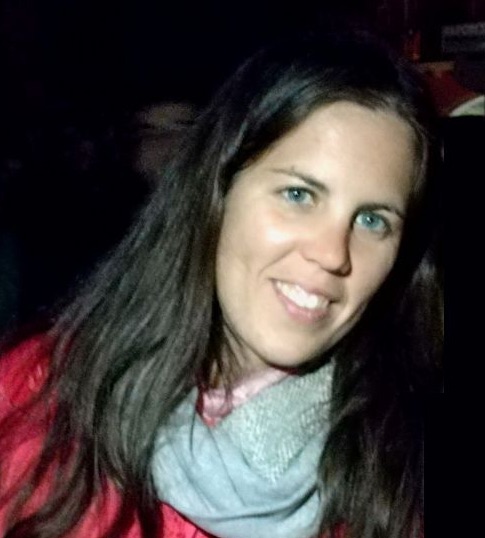
Laia Amorós Carafí
HIIT Postdoctoral Fellow 1.9.2019-31.7.2021
Amorós is part of the Machine Learning for Big Data Research Group of Alex Jung and she works in close connection with the Algebra, Number Theory and Applications Research Group of Camilla Hollanti.
Amorós has a BSc and a MSc in mathematics from the University of Barcelona. In 2016 she obtained a PhD in number theory under a collaboration between the University of Barcelona and the University of Luxembourg. She moved to Finland on 2018 to join Prof. Hollanti’s group as a postdoc at the Mathematics Department at Aalto University. In 2019 she joined Prof. Jung’s group and moved to the Computer Science Department. She is also Finland’s coordinator of European Women in Mathematics.
Amorós’ research interests include algebraic number theory, isogeny-based cryptography, wireless communications security and machine learning applications. She likes combining different unrelated areas to come up with new ideas. “Number theory can be applied to security in wireless communications and to cryptography. Machine learning provides a new and exciting source to approach these areas from a different point of view”, she says
“In 2020, we started to obtain the first results using deep learning to improve wireless communications in specific cases. This was a first step to a more general project that we are currently working on”, tells Amorós. These first results can be found in a paper accepted in the IEEE ICASSP 2021 conference. In the same area, but with a more classical approach, a paper was accepted to appear in IEEE Transactions on Information Theory in 2021. Besides that Amorós finished a project on homomorphic encryption started at the Private AI Bootcamp offered by Microsoft Research in December 2019, which resulted in a publication [2] to appear in Protecting Privacy through Homomorphic Encryption by Springer. She also finished a paper on isogeny-based cryptography to be published in 2021. A paper [1] from her PhD thesis was published.
Publications in 2021:
Publications in 2021:
[1] Laia Amorós. Images of Galois representations in mod p Hecke algebras. International Journal of Number Theory, published June 2021.
[2] Laia Amorós, Mikko Pitkänen.Learning optimal lattice codes for MIMO communications. ICASSP 2021 – 2021 IEEE International Conference on Acoustics, Speech and Signal Processing (ICASSP), June 2021
[3] Laia Amorós, Mohamed Taoufiq Damir, Alex Karrila, Oliver Gnilke, David Karpuk, Camilla Hollanti. Well-Rounded Lattices: Towards Optimal Coset Codes for Gaussian and Fading Wiretap Channels. IEEE Transactions on Information Theory, published June 2021.
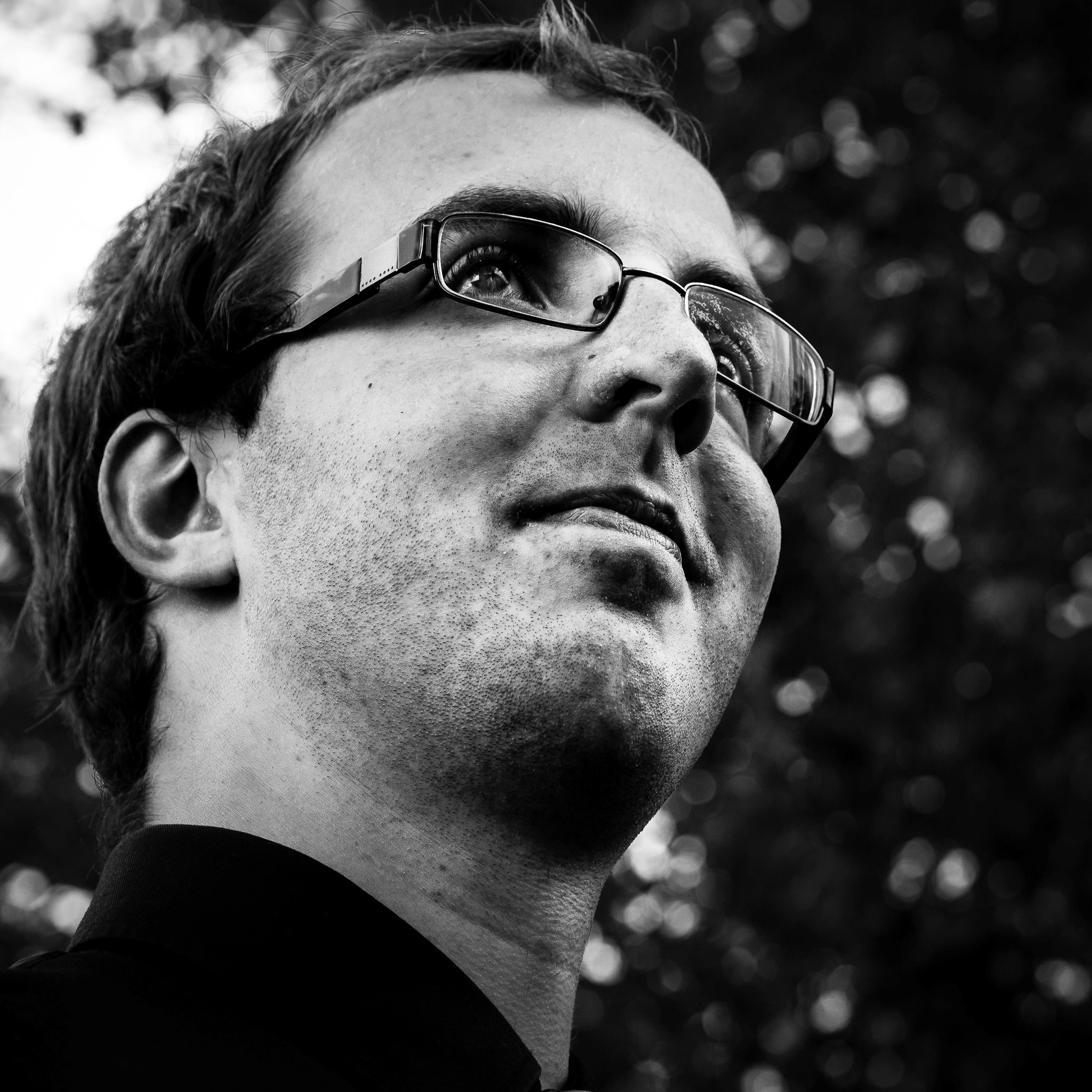
Dr. Jeremias Berg obtained his Master’s degree in Mathematics in 2014 and his PhD in Computer Science in 2018 from the University of Helsinki. His doctoral studies were supervised by Professor Matti Järvisalo. Berg’s doctoral research and thesis “Solving Optimization Problems via Maximum Satisfiability: Encodings and Re-Encodings“ received both national and international recognition in the form of awards from both the University of Helsinki and the Association for Constraint Programming. After graduating Dr. Berg undertook two research visits: to the University of Melbourne in 2018 and to the University of Toronto in 2019. Both visits were fruitful, resulting in publications and ongoing research collaboration. Currently, Berg is working as an HIIT Postdoctoral Fellow in the Constraint Reasoning and Optimisation group at the University of Helsinki. Berg is actively teaching at the university, for example, supervising Bachelor’s and Master’s theses. Berg also contributes to the University’s core duty of community relations, for example via his membership in the Young Academy Finland (Nuorten Tiedeakatemia). More information regarding Berg and his research can be found on his webpage jeremiasberg.com.
Berg’s research focuses on developing effective, general-purpose, tools for solving NP-hard optimization problems arising in data analysis, machine learning and AI. He is especially interested in logic-based declarative approaches. His doctoral research focused on the Boolean optimization paradigm of Maximum Satisfiability (MaxSAT). The research developed the theoretical and algorithmic understanding of MaxSAT. It also resulted in state-of-the-art MaxSAT-based solution methods to central data-analysis problems, including data visualisation, clustering and Bayesian network structure learning. Berg’s more recent research builds on his doctoral research. His recent interests include incomplete solving, i.e. developing algorithms for quickly computing good solutions to difficult optimisation problems. He is the primary developer of the state-of-the-art incomplete MaxSAT solver Loandra – one of the best performing solvers in the recent MaxSAT Evaluations. His research has also contributed to numerous other tools for solving NP-hard problems: including the CP solver solver Geas, the MaxSAT preprocessor MaxPre, and Triangulator, an implementation of the Bouchitté-Todinca Algorithm for solving various graph optimisation problems.
Berg’s recent research highlights include the 2021 Academy of Finland award for his project entitled “Next-Generation Trustworthy Constraint Optimisation.” His project was one of forty-four post-doctoral projects that received funding for 2021. More information about Berg’s Academy of Finland project can be here A complete list of Academy of Finland projects can be found here
Sample of publications in 2021:
[1] Niskanen, A, Berg, J & Järvisalo, M 2021, Enabling Incrementality in the Implicit Hitting Set Approach to MaxSAT under Changing Weights. in LD Michel (ed.), Proceedings of the 27th International Conference on Principles and Practice of Constraint Programming (CP 2021). pp. 44:1-44:19
[2] Ihalainen, HE, Berg, J & Järvisalo, M 2021, Refined Core Relaxation for Core-Guided MaxSAT Solving. in LD Michel (ed.), Proceedings of the 27th International Conference on Principles and Practice of Constraint Programming (CP 2021), pp. 28:1-28:19.
[3] Smirnov, P, Berg, J & Järvisalo, M 2021, Pseudo-Boolean Optimization by Implicit Hitting Sets. in LD Michel (ed.), 27th International Conference on Principles and Practice of Constraint Programming (CP 2021), pp. 51:1-51:20
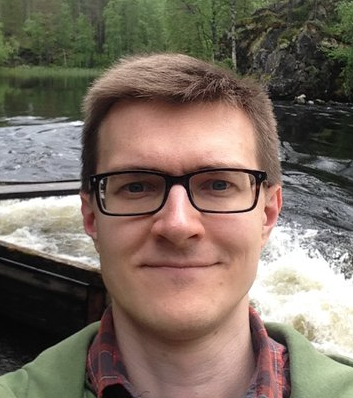
Markus Heinonen graduated with a PhD in machine learning from University of Helsinki in 2013. He visited TeleCom ParisTech for a two-year postdoc period, and joined Aalto University in 2015. He is currently an Academy Research Fellow.
His research focuses on Gaussian processes, Bayesian deep learning, dynamical models and reinforcement learning with applications in bio- and chemoinformatics and robotics. He has 32 peer-reviewed publications with an H-index of 17. His publication record contains recent contributions to NIPS, ICML, AISTATS and ICLR.
He is a co-organizer of a Dagstuhl Seminar on “Continuous-time Deep learning”, which was postponed due to Covid. He is the lead scholar in the Academy of Finland BREAL consortium 2020-22: Bridging the Reality Gap in Autonomous Learning, and he was awarded the Academy research fellowship for 2020-24. He co-organizes the FCAI machine learning “coffee” seminar.
His recent research in 2020 contains works on developing more efficient reinforcement learning with deep Gaussian processes; on introducing new low-rank Bayesian neural networks with state-of-the-art performance; on optimising synthetic reactions with active learning [2]; and on proposing new kinds of convolutional spectral kernels [1]. He is one of the organizers in a Dagstuhl Seminar on “Continuous-Time Deep learning”, which was postponed due to Covid.
Sample of publications in 2020:
[1] Zheyang Shen, Markus Heinonen, Samuel Kaski. Learning spectrograms with convolutional spectral kernels. Proceedings 23rd International Conference on Artificial Intelligence and Statistics (AISTATS), pp. 3826-3836, 2020.
[2] Sanni Voutilainen, Markus Heinonen, Martina Andberg, Emmi Jokinen, Hannu Maaheimo, Johan Pääkkönen, Nina Hakulinen, Juha Rouvinen, Harri Lähdesmäki, Samuel Kaski, Juho Rousu, Merja Penttilä, Anu Koivula. Substrate specificity of 2-Deoxy-D-ribose 5-phosphate aldolase (DERA) assessed by different protein engineering and machine learning methods. Applied Microbiology and Biotechnology, 104, pp. 10515-29, 2020.
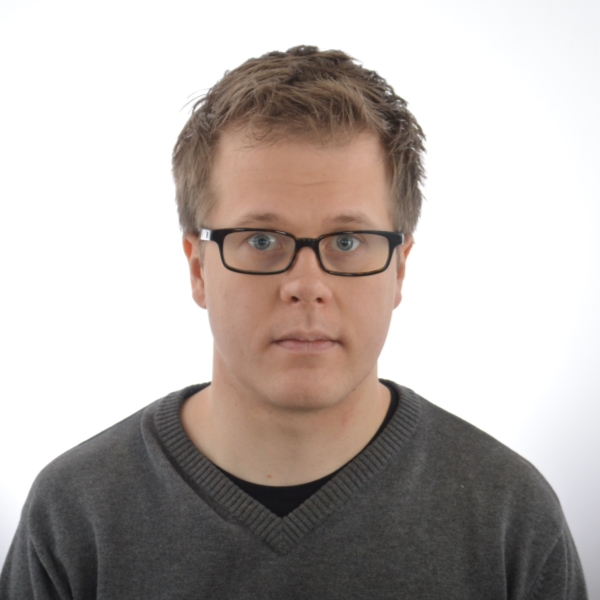
Docent Antti Hyttinen obtained his Master’s degree in Information Technology in Tampere University (of Technology) in 2004 and his PhD in Computer Science in 2013 from the University of Helsinki. His doctoral studies were supervised by Docent Patrik Hoyer. Dr. Hyttinen did research at California Institute of Technology during 2014. Dr. Hyttinen has also obtained the competitive personal post-doc funding from the Academy of Finland (2016). Dr. Hyttinen received the title of Docent in February 2020. Currently, Dr. Hyttinen works as a HIIT Research Fellow in the Sums of Products research group, collaborating with several research groups at the department.
Hyttinen’s research focuses on causal inference and probabilistic graphical models. Dr. Hyttinen has developed theory and structure learning algorithms for several different types of probabilistic graphical models. Many of these are causal models that allow also for latent confounding and feedback. These methods build on many different kinds of techniques such as Branch and Bound, MIP, MaxSAT, ASP, and dynamic programming. In addition, Dr. Hyttinen has developed methods for causal effect identification, experiment selection and combining different types of data sources for the aforementioned tasks.
During 2021, Dr. Hyttinen published papers on particularly in causal effect identification and structure estimation. Dr. Hyttinen lectured the probabilistic graphical models course in the data science master program. He also participated in research and thesis supervision at Ph.D. and M.Sc. levels.
Sample of publications in 2021:
[1] K. Rantanen, A. Hyttinen, M. Järvisalo. Maximal Ancestral Graph Structure Learning via Exact Search. Proceedings of the 37th Conference on Uncertainty in Artificial Intelligence (UAI), 2021.
[2] S. Tikka, A. Hyttinen, J. Karvanen. Causal Effect Identification from Multiple Incomplete Data Sources: A General Search-based Approach. Journal of Statistical Software, Articles, Volume 99, Issue 5, 2021.
[3] J. Karvanen, S. Tikka, A. Hyttinen. Do-search – a tool for causal inference and study design with multiple data sources. Epidemiology (journal), Volume 32, Issue 1, p. 111-119, 2021.
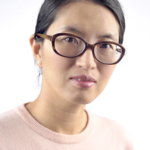
Dr. Xiaoli Liu received her PhD degree in mathematics from the University of Helsinki in December 2017. Her doctoral studies were supervised by Professor Mats Gyllenberg. After graduating she worked as a Postdoctoral researcher in the Biomimetics and Intelligent System Group (BISG) at the University of Oulu. She worked with Prof. Pan Hui’s group as a visiting scholar in 2019 and Polar Electro Oy with collaboration of University of Oulu in 2018. In November 2019, she joined the research group lead by Prof. Sasu Tarkoma in the Department of Computer Science at University of Helsinki as a Postdoctoral researcher. Dr. Xiaoli Liu currently works as a Postdoctoral fellow within Helsinki Institute for Information Technology (HIIT).
Dr. Xiaoli Liu’s research interests focus on distributed systems and edge intelligence, and her participated projects are related to IoT, federated learning, opportunistic learning, differential privacy, 5G and Augmented reality (AR). Dr. Xiaoli Liu has published 19 peer-reviewed journal and conference articles. She publishes papers in top venues, such as IEEE Internet Computing Magazine, IEEE Transactions on Intelligent Transportation Systems, and ACM Transactions on Sensor Networks.
Her recent research in 2021 contains providing solutions for scalable air quality monitoring by combing edge intelligence, 5G, and sensor calibration techniques [1]; utilizing context-aware AR together with 5G edge for path planning [2]; extending the previous Bayesian federated learning research work to have a model cluster instead of assuming a global model; opportunistic learning for air quality monitoring; and proving the feasibility of putting independent Component Analysis (ICA) under the distributed setting. Meanwhile, she also works for two survey papers: outdoor low-cost sensor and sensor calibration for air quality monitoring [3] and COVID-19 in Public Transportation: Transmission Risk, Mitigation and Prevention.
She is actively involved in funding application, workshop organizing, and teaching in 2021, for example, the participated project application “NSF joint call with the collaboration of Yale University” submitted in April 2021 has got the positive decision. She is the course advisor for bachelor thesis in the spring semester and co-teaching Advanced Course in Deep Learning (5cr) for in the autumn semester and she will be the main responsible teacher from 2022. Meanwhile, she serves as a board member of the Junior Faculty Club in University of Helsinki to provides support for PhD students and Postdoctoral researchers
Sample of publications in 2021:
[1] X. Su, X. Liu, N.H. Motlagh, J. Cao, P. Su, P. Pellikka, Y. Liu et al. “Intelligent and Scalable Air Quality Monitoring with 5G Edge.” IEEE Internet Computing 25, no. 2 (2021): 35-44.
[2] J. Cao, X. Liu, Xiang Su, Sasu Tarkoma, Pan Hui, “Context-Aware Augmented Reality with 5G Edge”, IEEE Global Communications Conference, Madrid, Spain, 7 -11 December 2021.
[3] C. Francesco, J. Mineraud, E. Lagerspetz, S. Varjonen, X. Liu, K. Puolamäki, P. Nurmi, and S. Tarkoma. “Low-cost outdoor air quality monitoring and sensor calibration: A survey and critical analysis.” ACM Transactions on Sensor Networks (TOSN) 17, no. 2 (2021): 1-44.
[4] Z. S. Liu, G. Xiong, Z. B. Wei, Y. Zhang, M. Zheng, X. Liu, S. Tarkoma, M. Huang, Y. S. Lv, C. H. Wu. “Trip Purposes Mining From Mobile Signaling Data.” IEEE Transactions on Intelligent Transportation Systems (2021).
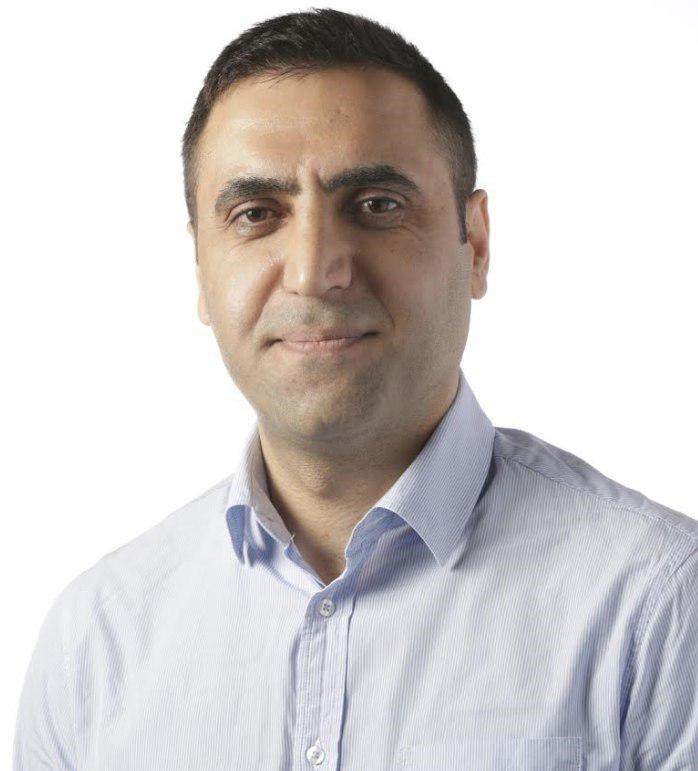
Dr. Naser Hossein Motlagh received the B.Sc. degree in Information Technology and the M.Sc. degree in Telecommunications Engineering from the University of Vaasa, Finland, in 2012. Dr. Motlagh received his D.Sc. degree in networking technology from the Department of Communications and Networking, School of Electrical Engineering, Aalto University, Finland, in 2018. His doctoral research was focused on exploring solutions for challenges associated with Internet of Thing service delivery using Unmanned Aerial Vehicles (UAVs). In 2018, after receiving the D.Sc. degree, he continued as Postdoctoral researcher at the Department of Industrial Engineering and Management at Aalto University. From January 2019 to December 2020, he was a Postdoctoral fellow within Helsinki Institute for Information Technology (HIIT) – Helsinki Center for Data Science (HiDATA) program. From January 2019, he has been a member of Megasense program and since January 2021, he is a Postdoctoral fellow within Nokia Center for Advanced Research (NCAR) at the University of Helsinki. For more information about Dr. Motlagh, please see his profile page at the University of Helsinki.
Dr. Motlagh’s research is focused on large-scale deployment of sensor networks and providing Internet of Things (IoT) services through data analytics at the edge of wireless communication networks. In general, his research interests include the IoT, wireless sensor networks, environmental sensing, and unmanned aerial and underwater vehicles; with focus on networks, sensing, applications,and services. Dr. Motlagh’s research aims to contribute smart and sustainable solutions and assist solving current and future problems of different environments such as by buildings’ energy optimization, marine pollution monitoring, and air pollution monitoring in urban areas. Part of his research includes finding intelligent and energy efficient solutions in smart buildings. He also seeks novel IoT-based methodologies in smart environments for having healthy work and living spaces. He is carrying out research on large-scale autonomous marine pollution monitoring using autonomous underwater vehicles. In addition, with the use of low-cost air quality sensors and emerging communication technologies such as 5G and beyond networks, he explores solutions for challenges related to enabling massive scale deployments of air quality sensors in urban areas and seeking solutions for healthier living environments.
Dr. Motlagh has published eight journal articles and six conferences papers during his postdoctoral fellowship with Helsinki Institute for Information Technology (HIIT). His contributions are published in top venues such as IEEE Communications Magazine, IEEE Internet Computing Magazine, IEEE Internet of Things Magazine, and IEEE Sensors Journal. He contributed publishing the vision of Megasense program in [1], and his contribution to a conference paper [2] was among the top 5 papers in Proceedings of the 15th IEEE Conference on Industrial Electronics and Applications. In 2020, He was co-teaching one masters level course: Networked Systems and Services (5 cr), and he was a co-supervisor for one master’s thesis. He was also awarded a fellowship at Nokia Center for Advanced Research (NCAR).
Sample of publications in 2020:
[1] Naser Hossein Motlagh, Emil, Lagerspetz, Petteri Nurmi, Xin Li, Samu Varjonen, Julien Mineraud, Matti Siekkinen, Andrew Rebeiro-Hargrave, Tareq Hussein, Tuukka Petäjä, Markku Kulmala, Sasu Tarkoma. Toward massive scale air quality monitoring. IEEE Communications Magazine, 58(2), pp.54-59, 2020.
[2] Andrew Rebeiro-Hargrave, Naser Hossein Motlagh, Samu Varjonen, Emil Lagerspetz, Petteri Nurmi, Sasu Tarkoma. MegaSense: Cyber-physical system for real-time urban air quality monitoring. In Proceedings 15th IEEE Conference on Industrial Electronics and Applications (ICIEA), pp. 1-6, 2020.
[3] Martha Arbayani Zaidan, Naster Hossein Motlagh, Pak L. Fung, David Lu, Hilkka Timonen, Joel Kuula, Jarkko V. Niemi, Sasu Tarkoma, Tuukka Petäjä, Markku Kulmala, Tareq Hussein. Intelligent calibration and virtual sensing for integrated low-cost air quality sensors. IEEE Sensors Journal, 20(22), pp. 13638-13652, 2020.

Leysan’s formal education was a transition from industrial engineering to computer science and later human-computer interaction. She obtained a Master’s degree in Automation and Control systems engineering from Kazan National Technological University, Russia and a Master’s degree in Computer Science from the University of Trento, Italy. During her doctoral studies at the University of Trento, she focused on human factors in digital health systems. In 2019, she obtained a PhD in Computer Science from the University of Trento. Afterwards, she joined the Health Technology Design group at Trinity College Dublin as an ALECS Marie Skłodowska-Curie postdoctoral fellow. In July 2021, she moved to Finland to join Prof. Lindqvist’s Usable Security and Privacy research group as a postdoc at the Computer Science Department at Aalto University.
Leysan’s research is grounded in the discipline of Human Factors with a specific interest in user-centred design and usable security and privacy of socio-technical systems. She explores the challenges and opportunities of designing secure user-centred information systems that respect users’ privacy: from information design and technological support of work practices in place to interaction design and user experience. Her work aims to understand how to achieve a better fit between various stakeholders, organisational context, and technology within the healthcare context and beyond. She mostly employs mixed-method user studies with a focus on qualitative approaches.
Leysan is an action researcher, and since her Master’s, she has been collaborating with software companies such as NearForm, SilverCloud Health, and CBA Group.
Sample of publications in 2021:
[1] L. Nurgalieva, S. Ryan, G. Doherty. Riku Laine, Antti Hyttinen, Michael Mathioudakis. Attitudes towards COVID-19 contact tracing apps: a cross-national survey. IEEE Access, 2021.
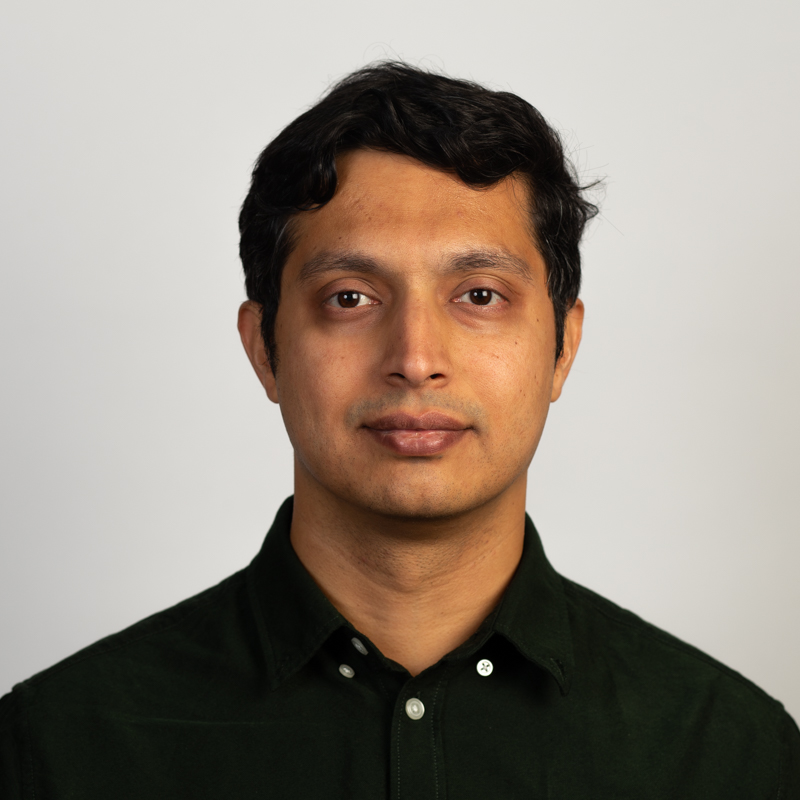
Ashwin Rao obtained his master’s degree in Information Technology in 2009 from the Indian Institute of Technology Delhi, and his PhD in Informatique (Computer Science) in 2013 (thesis defended in 2013 at Inria and certificate awarded in 2015) from University of Nice Sophia Antipolis, France. His doctoral studies were supervised by Professor Walid Dabbous and Professor Arnaud Legout. After graduating he arrived in Finland in July 2014 and has been a post-doctoral researcher since. He received the title of Docent from the University of Helsinki in September 2020.
He is actively teaching at the university, for example, co-supervising Bachelor’s, Master’s, and PhD theses. As of April 2021, he has co-supervised 1 PhD student, 10 Masters Students, and co-hosted research visits of 2 PhD students. More information about his research activities can be found on his webpage.
His research interests are in the area of distributed systems and networking, and his projects have touched mobile networks, video streaming, peer-to-peer communication, wireless networks, privacy and security issues, and recently operating system architectures. His research works are heavily systems-oriented, and they involve building systems for conducting large-scale measurement studies, analyzing the results, and addressing the issues identified.
His current research is along the following two interrelated threads.
1. Parallelism for high-performance computing. This work focuses on building an operating system which can be leveraged for I/O-intensive parallel tasks. It is motivated by the fact that the OS kernel needs to be bypassed for I/O operations because CPU speeds have stagnated while I/O speeds are increasing.
2. Multi-connectivity. Our devices use static rules for selecting the communication interface to use, and this work is focused on addressing this shortcoming and enabling the devices to coordinate with the network controllers managing the network functions in the network.
He received the title of Docent in September 2020. He helped organize two webinars on Edge Intelligence which had an audience of more than 50 people. He co-authored two research proposals, a) IDEA-MILL that received a 3-year funding from the Academy of Finland with Prof. Sasu Tarkoma, and b) Lean6G that received a 3 year funding with Prof. Sasu Tarkoma and Prof. Leandros (Yale University). In 2021, he also taught one Masters level courses: Networked Systems and Services (5 cr) and 1 student submitted a PhD thesis under his co-supervision.
Sample of publications in 2021:
[1] M. A. Hoque, A. Rao, and S. Tarkoma. Network and Application Performance Measurement Challenges on Android Devices. in SIGMETRICS Perform. Eval. Rev. 48, 3, pp. 6–11, 2021.
[2] M. Pozza, A. Rao, D. F. Lugones and S. Tarkoma, FlexState: Flexible State Management of Network Functions, in IEEE Access, vol. 9, pp. 46837-46850, 2021.
[3] S. Hätönen, A. Rao and S. Tarkoma, Programmable Session Layer MULTI-Connectivity, in IEEE Access, vol. 10, pp. 5736-5752, 2022.
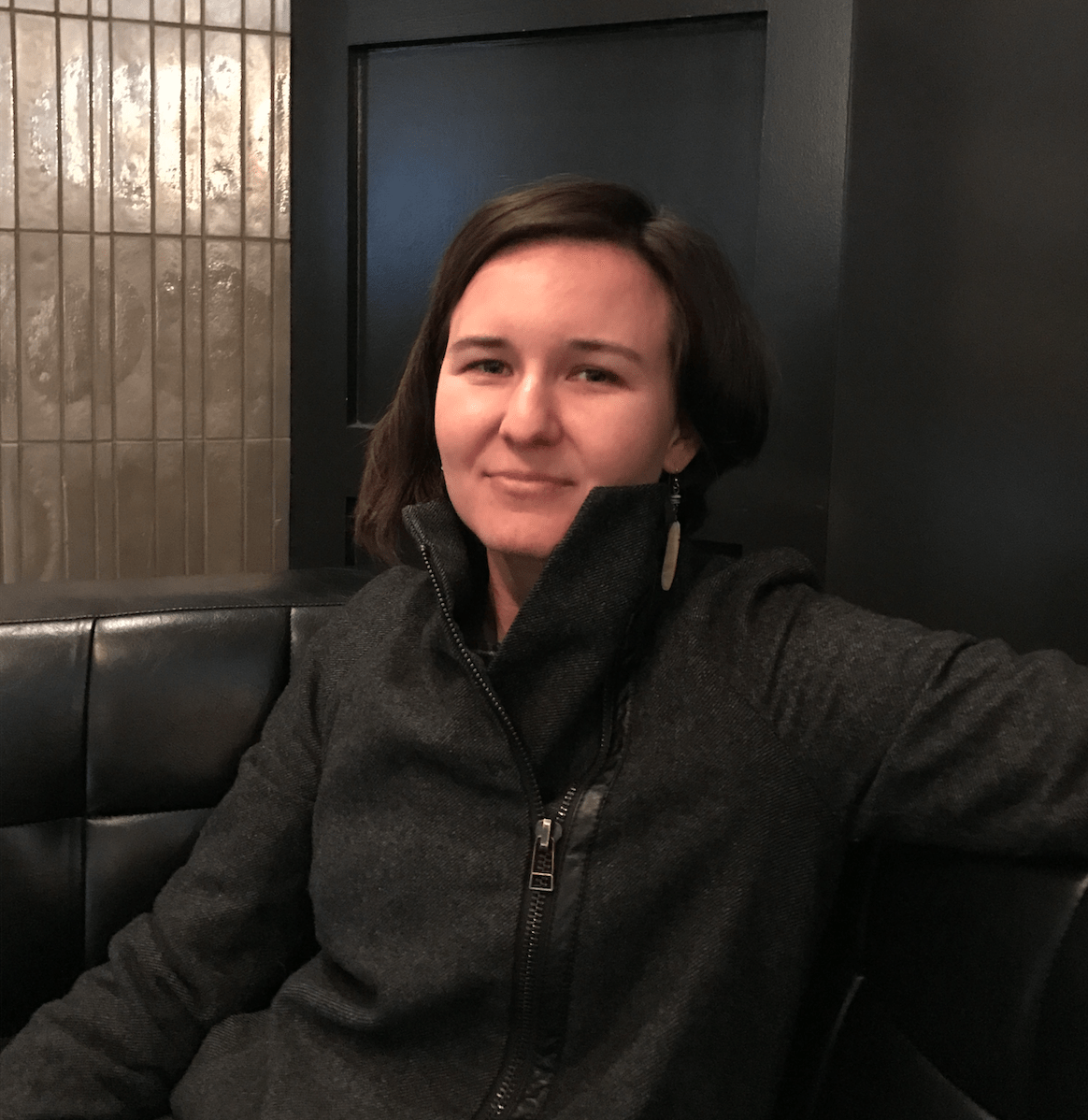
Dr Joanna Slawinska is a HIIT Research Fellow at the Department of Computer Science, University of Helsinki, since December 2020. She has a masters degree in physics with a focus on asteroseismology (graduated in 2005) and also PhD in computational geophysics (graduated in 2011) from University of Warsaw, and postdoctoral research training in applied mathematics from Courant Institute of Mathematical Sciences at New York University .
Joanna Slawinska has extensive expertise on data-driven methods for dynamical systems, and their applications to various fields of physics, such as extraction and predictions of spatiotemporal patterns in turbulent flows. Current and future interests include AI approaches to complex systems, in particular probabilistic and Bayesian methods that are relevant to understand further and improve predictability of high-dimensional time-resolved datasets, such as temporal networks, causality, or game theory.
Joanna Slawinska joined University of Helsinki in December 2020. Since then, she has started collaborating on a number of projects, including collaborations with INAR and also Aalto University. She is also interested in expanding her expertise and training by working with experts from the Department of Computer Science/FCAI, with special focus on Bayesian and probabilistic methods such as temporal networks, causality and game theory.
Prior to that, Joanna Slawinska has worked on a number of projects during 2020, including schemes for probabilistic predictions such as with quantum compiler for dynamical systems. A draft [1] is currently under preparation for submission. Another two projects that got completed and published in 2020 concern nonparameteric prediction of tropical dynamics [3] and also novel decomposition and spatiotemporal pattern extraction in computational neuroscience [2].
Sample of publications in 2021:
[1] Gary Froyland, Dimitrios Giannakis, Benjamin Lintner, Maxwell Pike, Joanna Slawinska. Spectral analysis of climate dynamics with operator-theoretic approaches. Nature Communications. Vol 12, no 1.
[2] Suddhasattwa Das, Dimitrios Giannakis, Joanna Slawinska.Reproducing kernel Hilbert space compactification of unitary evolution groups. Applied and Computational Harmonic Analysis. Vol. 54 (2021): 75-136.
[3] Suddhasattwa Das, Dimitrios Giannakis, Joanna Slawinska. The spectral measure of a dynamical system 2021 Joint Mathematics Meetings (JMM).
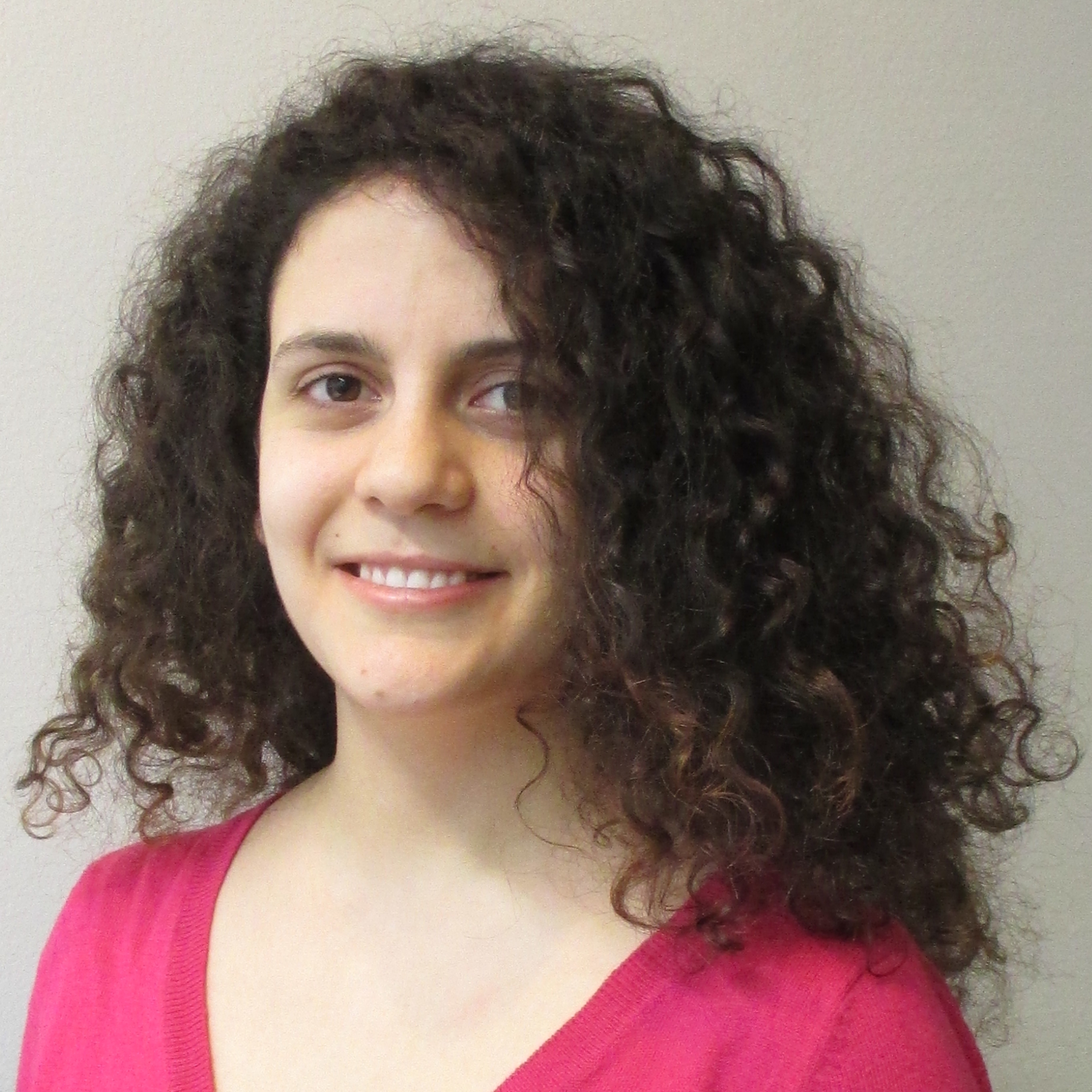
Dr. Razane Tajeddine received her B.Sc. in Electrical Engineering from Notre Dame University-Louaize, Faculty of Engineering, Lebanon, in 2012, and her M.Sc. in Electrical and Computer Engineering from the American University of Beirut, Lebanon, in 2014. She received her doctorate degree from the department of Mathematics and Systems Analysis at Aalto University in 2019. From 2014 to 2017, she was a PhD student at the Electrical and Computer Engineering Department at the Illinois Institute of Technology. In 2016, she came for a research visit to Aalto University to work in collaboration with the ANTA group. She was invited to the Algebraic Coding Theory for Networks, Storage, and Security, Dagstuhl in December 2018 and to the Oberwolfach Workshop on Contemporary Coding Theory, Leibniz in March 2019. Currently, Tajeddine is working as an HIIT Postdoctoral Fellow at the University of Helsinki.
Tajeddine’s research focuses on developing effective privacy preserving methods for machine learning, mainly where data is partitioned between multiple parties. Her doctoral research focused on private information retrieval (PIR), where schemes were developed to allow users to retrieve a file from a distributed storage system without revealing what file is being retrieved.
During the year 2020, Tajeddine published a preprint [1] for the work on private data sharing on vertically partitioned data, and presented the work as a poster in the AI day 2020.
Publications in 2020:
[1] Razane Tajeddine, Joonas Jälkö, Sami Kaski, Antti Honkela. Privacy-preserving data sharing on vertically partitioned data. ArXiv preprint, 2020.
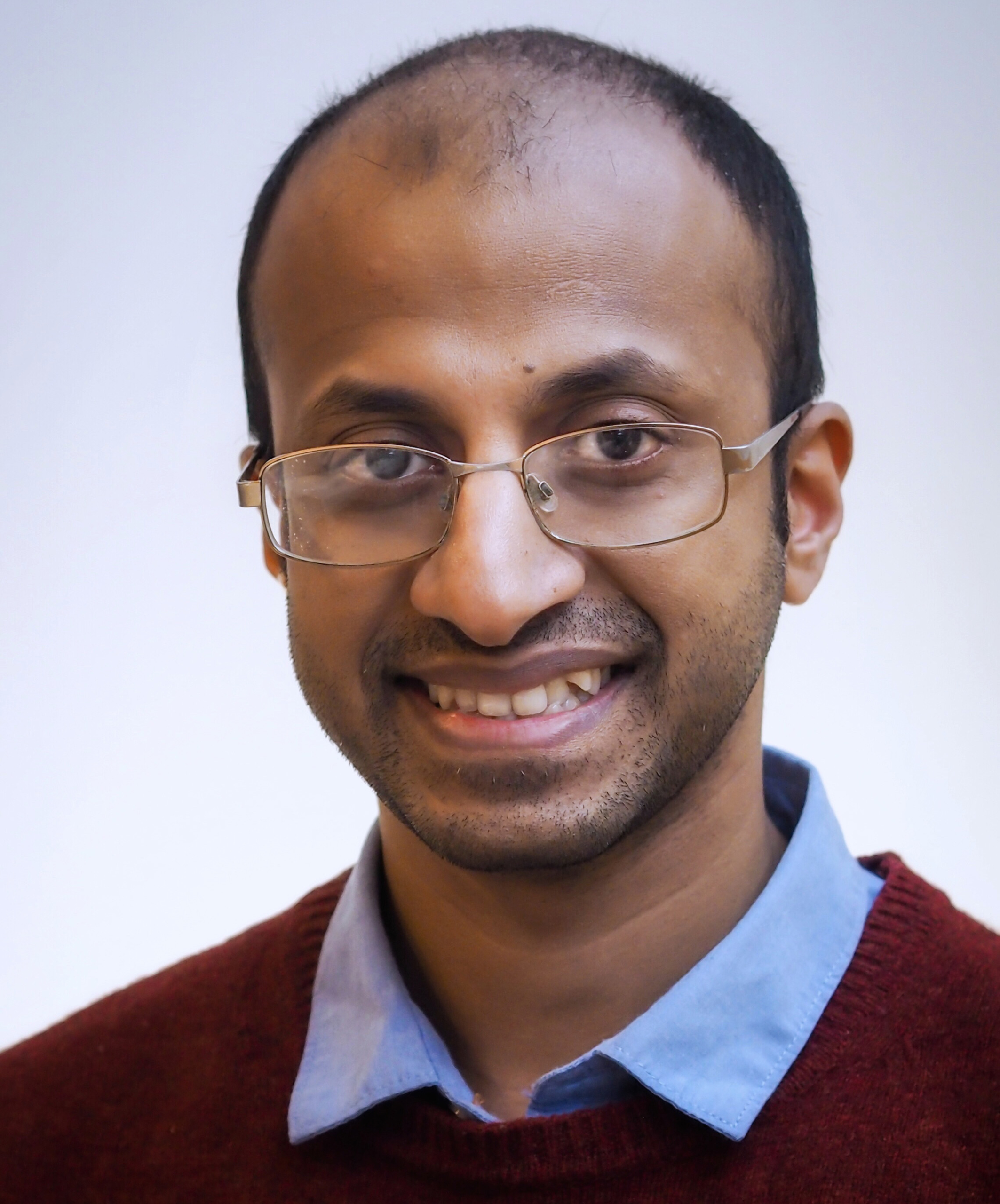
Dr. Nitin Williams completed his Ph.D. from University of Reading, UK, in 2011, on developing novel signal processing methods to analyse human neuroscience data. He continued this line of research during his first post-doctoral period under Prof. Richard Henson at MRC Cognition & Brain Sciences Unit, University of Cambridge, UK. This period resulted in several important publications, e.g. in Nature Communications, Brain, Human Brain Mapping, from his involvement on the large Cam-CAN project*. The cross-cutting theme of his work is on developing novel computational methods and models to analyze human Neuroscience data. He has several publications in this field (h-index=14, citations=1048), and has published in prestigious avenues including Nature Communications, Brain and Human Brain Mapping.
Nitin is currently funded by HIIT, working with Prof. Samuel Kaski at the Department of Computer Science, Aalto University, Finland. His project is on using Approximate Bayesian Computation (ABC) methods to estimate parameters of biologically plausible models of human neuroscience data. Current methods to analyse human neuroscience use abstract statistical models, hence do not furnish information about biological mechanisms producing these data. During his exciting project with Prof. Samuel Kaski and Dr. Matias Palva, Nitin will 1) build biologically plausible models of human neuroscience data, and 2) employ advanced Bayesian methods to fit these biologically plausible models to experimental human Neuroscience data. Models and methods from the project will advance Cognitive Neuroscience, by providing researchers with tools to gain insight into mechanisms underpinning their data.
Dr. Williams’ work in 2021 culminated in a novel, biologically plausible model of experimentally observed human Neuroscience data [1] (press release: https://www.hiit.fi/brain-model/). He also presented this work as a poster at AI Day 2021. Further, Dr. Williams’ Docentship was approved by the Faculty of Science, Helsinki University, Finland. Finally, he accepted to be Associate Editor of the journal Network: Computation in Neural Systems, and was actively involved in supervising two B.Sc. theses.
Publications in 2021:
[1] Williams N, Toselli B, Siebenhühner F, Palva S, Arnulfo G, Kaski S*, Palva M* (2021) “Biophysical network models of phase-synchronization in MEG resting-state” bioRxiv 2021.08.04.455014
[2] Williams N, Wang S, Arnulfo G, Nobili L, Palva S, Palva M (2021) “Modules in connectomes of phase-synchronization comprise anatomically contiguous, functionally related regions” bioRxiv 2021.06.24.449415
[3] Elumalai P, Yadav Y, Williams N, Saucan E, Jost J, Samal A (2021) “Graph Ricci curvatures reveal atypical functional connectivity in Autism Spectrum Disorder” bioRxiv 2021.11.28.470231
*Cam-CAN author list: Lorraine K. Tyler, Carol Brayne, Edward T. Bullmore, Andrew C. Calder, Rhodri Cusack, Tim Dalgleish, John Duncan, Richard N. Henson, Fiona E. Matthews, William D. Marslen-Wilson, James B. Rowe, Meredith A. Shafto, Karen Campbell, Teresa Cheung, Simon Davis, Linda Geerligs, Rogier Kievit, Anna McCarrey, Abdur Mustafa, Darren Price, David Samu, Jason R. Taylor, Matthias Treder, Kamen Tsvetanov, Janna van Belle, Nitin Williams, Lauren Bates, Tina Emery, Sharon Erzinlioglu, Andrew Gadie, Sofia Gerbase, Stanimira Georgieva, Claire Hanley, Beth Parkin, David Troy, Tibor Auer, Marta Correia, Lu Gao, Emma Green, Rafael Henriques, Jodie Allen, Gillian Amery, Liana Amunts, Anne Barcroft, Amanda Castle, Cheryl Dias, Jonathan Dowrick, Melissa Fair, Hayley Fisher, Anna Goulding, Adarsh Grewal, Geoff Hale, Andrew Hilton, Frances Johnson, Patricia Johnston, Thea Kavanagh-Williamson, Magdalena Kwasniewska, Alison McMinn, Kim Norman, Jessica Penrose, Fiona Roby, Diane Rowland, John Sargeant, Maggie Squire, Beth Stevens, Aldabra Stoddart, Cheryl Stone, Tracy Thompson, Ozlem Yazlik, Dan Barnes, Marie Dixon, Jaya Hillman, Joanne Mitchell, Laura Villis.
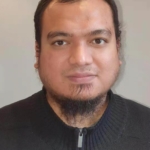
Martha Arbayani Zaidan obtained his Master’s degree in Control Systems in 2009 and his Ph.D. in Automatic Control and Systems Engineering in 2014, both from the University of Sheffield, UK. His doctoral study was conducted at Rolls-Royce University Technology Center for control and systems monitoring, supported by Rolls-Royce plc. He then worked as a Postdoctoral Research Associate (2014-2015) at Maryland University at College Park, US, and as a Postdoctoral Research Fellow (2015-2017) at Aalto University, Finland. From 2017, he has joined Institute for Atmospheric and Earth System Research (INAR) at University of Helsinki. He received the title of Docent in Atmospheric and Environmental Data Science in 2020. In between 2021 and mid-2022, Dr. Zaidan served INAR as a Research Associate Professor at Nanjing University, China. On July 2022, he has returned to University of Helsinki to work as a HIIT Research Fellow funded by HIIT and INAR. In his current role, he works on developing data science and machine learning methods for various applications in sensing systems, atmospheric and environmental sciences.
Dr. Zaidan’s general research interests are in applied artificial Intelligence and machine learning (e.g., fuzzy logic, artificial neural networks and deep learning, Bayesian techniques, Recursive Bayesian estimations, Kernel machines, sampling methods, inference approximations, self-organizing maps, etc.), health monitoring technologies (e.g., feature extractions, diagnostics, prognostics), intelligent control systems and systems identification. The applications include various engineering and scientifical systems including bio-medical robotics, twin rotor dynamics, aircraft gas turbine engines, applied physics, geoinformatics, atmospheric and environmental sciences as well as other intelligent engineering systems.
In 2022, Dr. Zaidan publications are mainly in the topics of automating scientifical data analysis, intelligent sensor calibration and virtual sensors. In his current role, Dr. Zaidan also delivers lectures in the courses of Statistical Analysis for Environmental Field Measurements and Environmental Data Sciences. He has also participated actively in various research projects and thesis supervision for Ph.D. and summer intern students.
Sample of publications in 2022:
[1] M.A. Zaidan, N.H. Motlagh, P.L. Fung, A.S. Khalaf, Y. Matsumi, A. Ding, S. Tarkoma, T. Petäjä, M. Kulmala, and T. Hussein. Intelligent air pollution sensors calibration for extreme events and drifts monitoring. IEEE Transactions on Industrial Informatics, 19(2):1366–1379, 2023.
[2] M.A. Zaidan, Y. Xie, N.H. Motlagh, B. Wang, W. Nie, P. Nurmi, S. Tarkoma, T. Petäjä, A. Ding, and M. Kulmala. Dense air quality sensor networks: Validation, analysis, and benefits. IEEE Sensors Journal, 22(23):23507–23520, 2022.
[3] P. Su, J. Joutsensaari, L. Dada, M.A. Zaidan, T. Nieminen, X. Li, Y. Wu, S. Decesari, S. Tarkoma, T. Petäjä, M. Kulmala, and P. Pellikka. New particle formation event detection with Mask R-CNN. Atmospheric Chemistry and Physics, 22(2):1293–1309, 2022.